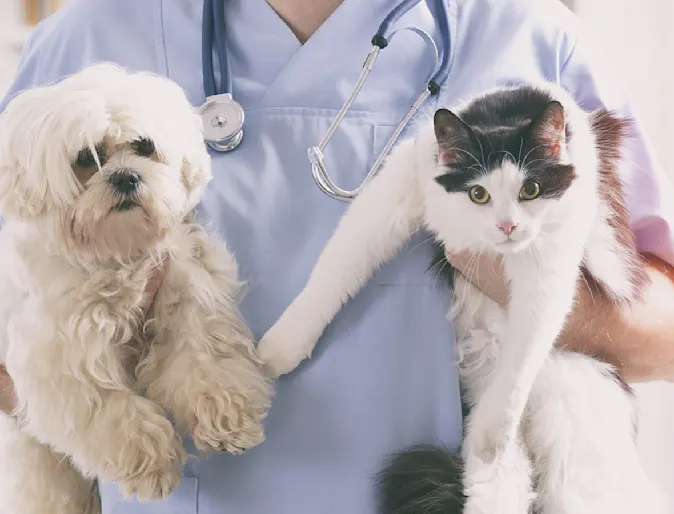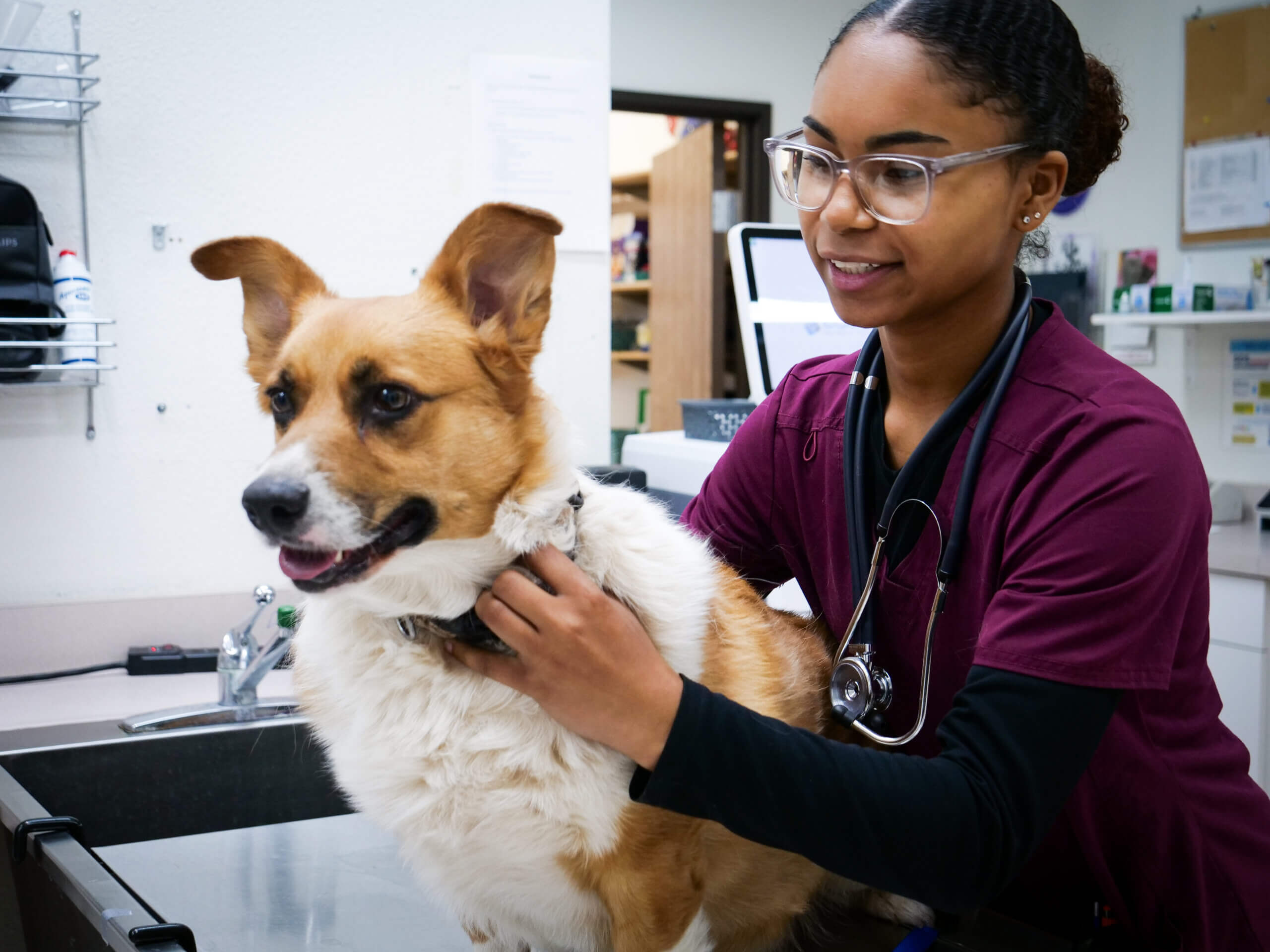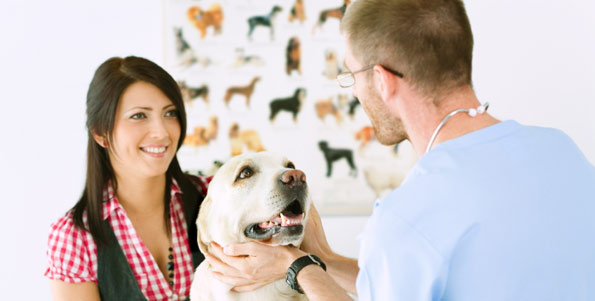Why Pet Rehabilitation Is Critical: the Conveniences of Vet Services for Your Pet's Healing
Pet rehabilitation is an essential element of recuperation for pets facing injuries or impairments. Vet solutions offer critical assistance through tailored rehabilitation plans that attend to individual needs. These strategies often consist of pain administration, physical treatment, and nutritional advice. Comprehending the different elements of animal rehab can brighten its significance in improving healing end results. What specific advantages do these solutions offer, and how can they change a pet's healing journey?
Understanding Animal Recovery
Pet rehab encompasses a range of therapeutic techniques focused on recovering the wellness and functionality of damaged or disabled pets. This area integrates various methods, consisting of physical therapy, hydrotherapy, and work-related treatment, customized to meet the particular demands of each animal. Recovery specialists analyze a pet's condition, establishing customized therapy strategies that may include workouts to enhance muscles, enhance wheelchair, and boost overall well-being. The procedure not only concentrates on physical healing yet also addresses psychological and behavioral facets. Animals frequently experience tension and anxiousness adhering to an injury, making mental wellness considerations vital in recovery. By creating a supportive environment, therapists can aid pets regain their confidence and adapt to their new conditions. With routine sessions, animals can experience considerable enhancements, eventually causing a much better high quality of life. Overall, understanding pet rehab highlights its relevance in advertising recovery and improving the bond in between family pets and their proprietors.
The Function of Pain Administration in Healing
Just how essential is efficient discomfort monitoring in the recovery of hurt animals? It plays a crucial role in facilitating recovery and improving the general wellness of family pets. Correct discomfort monitoring not just alleviates pain however additionally promotes movement, allowing pets to take part in rehabilitation activities essential for healing. When pain is successfully handled, animals have a tendency to respond favorably to treatment, leading to quicker recovery outcomes.Veterinarians use different techniques to evaluate and resolve discomfort, including medicines, acupuncture, and alternative therapies. By tailoring pain monitoring methods to the individual requirements of each animal, vets can assure that pets remain tranquil and participating throughout their recuperation trip. Decreasing pain helps minimize stress and anxiety, which can prevent healing and prolong recuperation times. To summarize, reliable discomfort administration is vital for enhancing the recovery procedure and improving the high quality of life for hurt animals.
Physical Treatment Techniques for Animals
Countless physical treatment techniques are readily available to help in the rehabilitation of pet dogs recuperating from injuries or surgeries (emergency vet bellingham). These techniques can boost movement, ease pain, and promote healing. Healing exercises, for example, help enhance muscular tissues and boost joint function, allowing pet dogs to reclaim their physical abilities progressively. Manual treatment, that includes massage therapy and mobilization, can alleviate tension and enhance flow, adding to a much faster recovery.Other techniques such as passive series of activity workouts motivate joint flexibility and reduce tightness. In addition, electrical stimulation therapy may be employed to stimulate nerves and muscular tissues, promoting healing and discomfort relief.Veterinary specialists frequently tailor these techniques to each animal's certain needs, ensuring a thorough recovery strategy. By executing these physical treatment techniques, pet dogs can experience enhanced lifestyle and a much more successful recovery from their disorders. The integration of these practices into rehabilitation programs is crucial for ideal healing results
Advantages of Hydrotherapy for Rehab
Hydrotherapy provides significant benefits in animal recovery, specifically in improving wheelchair. This water-based treatment advertises pain relief while providing convenience to hurt or recouping pet dogs. In addition, it assists in strength-building workouts that add to total physical recuperation.
Boosted Movement Enhancement
As pets recuperate from injuries or surgeries, improved wheelchair usually becomes a primary objective of their recovery. Hydrotherapy acts as a beneficial tool in achieving this purpose. Via water-based workouts, animals can participate in low-impact motions that help with joint movement and enhance muscular tissues without the stress and anxiety of weight-bearing activities. The buoyancy of water sustains their bodies, enabling enhanced variety of movement and flexibility improvement. In addition, hydrotherapy encourages better balance and control, which are crucial for recovering typical movement patterns. Normal sessions can bring about substantial development in an animal's physical abilities, inevitably improving their lifestyle. This strategy not just help in recovery yet likewise advertises a more energetic and fulfilling way of life post-rehabilitation.
Pain Relief and Comfort

Remedy for pain is a vital facet of pet rehabilitation, and hydrotherapy substantially adds to this process. By utilizing water's buoyancy, hydrotherapy lowers joint stress and relieves discomfort during motion. This restorative approach supplies a soothing environment where animals can take part in gentle exercises without the complete weight of their bodies influencing their healing. The cozy water promotes blood flow, advertising healing while likewise urging leisure. Furthermore, hydrotherapy sessions can be tailored to fulfill the certain demands of the pet, ensuring optimal comfort. As family pets experience decreased pain and boosted comfort levels, their total readiness to join recovery tasks commonly improves, causing a more reliable recovery journey. Subsequently, hydrotherapy acts as a crucial tool in improving pain alleviation and comfort throughout recovery.
Strength Structure Workouts
Strength-building workouts play he said a crucial role in the rehabilitation procedure, with hydrotherapy offering special benefits. This kind of treatment makes use of water resistance to boost muscle mass stamina without putting excessive strain on the joints. The buoyancy of water sustains the animal's weight, enabling much safer activity and raised array of motion. Additionally, hydrotherapy can improve cardiovascular wellness and promote overall physical fitness, aiding in much faster recovery from injuries or surgical procedures. The regulated setting also lessens the risk of reinjury, making it a perfect option for animals needing recovery. Routine hydrotherapy sessions can result in recognizable improvements in mobility, stamina, and endurance, inevitably improving the animal's lifestyle and ability to go back to typical activities.
Significance of Customized Rehabilitation Strategies
Personalized rehab plans are important for addressing the one-of-a-kind needs of each pet, making certain personalized therapy methods. These strategies allow for efficient progress tracking and necessary modifications, fostering optimal recuperation outcomes. Additionally, an all natural technique can improve the overall health of the pet, advertising an extra detailed rehab experience.
Individualized Therapy Approaches
While lots of rehabilitation programs adopt a one-size-fits-all approach, the distinct demands of each animal require individualized treatment prepare for perfect healing. Customized rehab plans consider different elements, including the pet's varieties, age, medical history, and particular injuries or problems. By tailoring treatments, vets can attend to each animal's special difficulties, making best use of the effectiveness of the rehab process. Embellished strategies might include various modalities such as physical treatment, hydrotherapy, and healing exercises, ensuring that the therapy straightens with the animal's abilities and progress. Additionally, personalized strategies foster a stronger bond between the pet and the caretaker, advertising an extra appealing and supportive recuperation environment. Eventually, personalized treatment is necessary for achieving ideal possible results in pet rehab.
Progression Monitoring and Adjustments

Holistic Recuperation Approaches
Holistic recovery methods are necessary for efficient animal rehab, as they stress the relevance of individualized therapy plans customized to every pet's certain demands. This technique takes into consideration the physical, emotional, and ecological factors affecting healing. Personalized rehab strategies might include a combination of physical treatment, dietary counseling, and behavioral adjustments. By addressing these varied facets, veterinarians can enhance the overall wellness of the pet and advertise a faster recovery. Such customized strategies assist in a deeper understanding of the pet's distinct challenges, leading to more reliable treatments. Ultimately, holistic recuperation techniques not only boost physical wellness but likewise contribute to the pet's psychological and emotional security, ensuring a thorough recovery experience.
The Effect of Nourishment on Recovery
Nourishment plays a necessary function in the healing process for fixing up pets, often identifying the rate and performance of recovery. A well-balanced diet supplies the needed nutrients that support tissue fixing, improve the body immune system, and enhance general vigor. Healthy protein is specifically vital, as it assists in muscle rebuilding and recovery from injuries. Crucial fats, vitamins, and minerals also add to reducing swelling and advertising optimal mobile function.Veterinarians frequently stress the value of tailored nourishment strategies, thinking about each pet's particular requirements, age, and health and wellness status. next page Correct hydration is just as vital, as liquids assist in nutrition absorption and help in cleansing. By guaranteeing that pet dogs get proper nourishment, caretakers can greatly boost their possibilities of a successful recuperation, causing better long-lasting wellness results. Inevitably, nutrition functions as a fundamental component in the rehab journey, supporting animals in regaining stamina and strength post-injury or health problem.
Success Stories: Animals Who Thrived After Recovery
Effective rehabilitation tales are plentiful, showcasing the resilience of pet dogs who have conquered significant obstacles. Take, for circumstances, Bella, a golden retriever that suffered severe injuries from a cars and truck mishap. With devoted vet care and a complete rehab program, she regained her mobility and returned to her playful self, much to her proprietor's delight. In a similar way, Max, an elderly pet cat identified with joint inflammation, experienced remarkable improvement with a combination of physical treatment and discomfort monitoring. His newfound agility allowed him to enjoy his favorite sunbathing areas once again. Another motivating situation is that of Coco, a rescued greyhound who overcame anxiousness via behavior alteration and socializing techniques, allowing her to thrive in her new home. These success stories exemplify the transformative power of animal rehabilitation, emphasizing that with the best support, pets can not only recoup but lead satisfying lives, improving the bonds they show their households.
Frequently Asked Concerns
The length of time Does the Rehabilitation Process Usually Consider Animals?
The rehabilitation procedure for pet dogs generally differs based on the injury or condition, ranging from a couple of weeks to several months. Individual progression, therapy type, and dedication to workouts considerably influence the total period of healing.
Are There Any Type Of Threats Connected With Animal Rehabilitation?
Pet recovery might carry risks such as exacerbation of injuries, improper techniques resulting in pain, or inadequate monitoring during recovery. These elements can prevent progress and influence the overall performance of the recovery process.

Can All Pets Advantage From Recovery Services?
Not all family pets might need recovery, however many can benefit greatly. Rehabilitation services can enhance mobility, alleviate pain, and boost total well-being, specifically for those recuperating from injuries, surgeries, or chronic problems.
How Can I Prepare My Family Pet for Rehabilitation Procedure?

What Signs Suggest My Pet Dog Needs Rehabilitation?
Indicators indicating a pet dog may require rehabilitation include difficulty strolling, hopping, decreased activity degrees, unwillingness to leap, or indications of discomfort. Observing these habits can prompt owners to seek professional assessment and therapy for their pets.